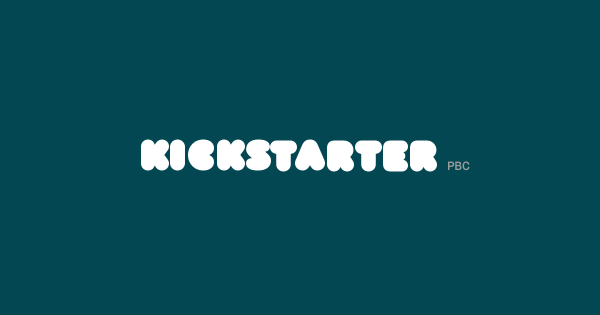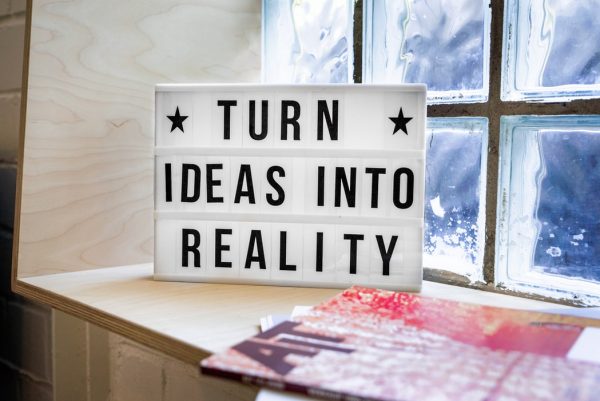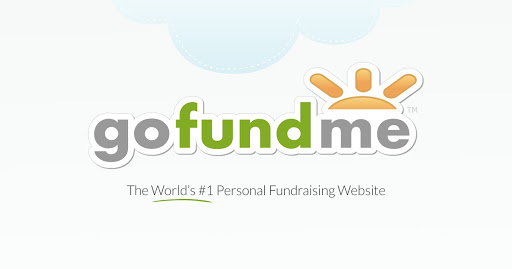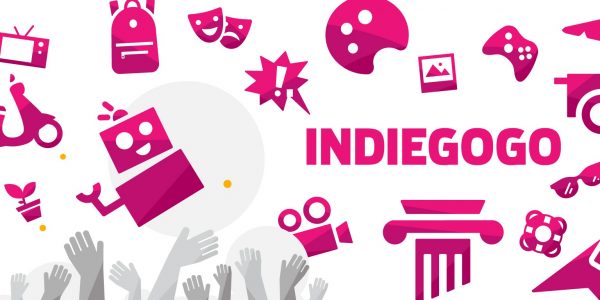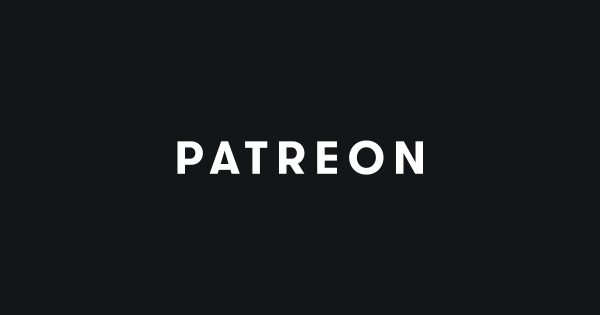It seems like people wonder how Kickstarter works because it seems too good to be true. To raise money fast and reach your project’s goals does seem like a dream. However, there is much more at work here.
What Is Crowdfunding?
Crowdfunding is basically a means for a group of individuals to help projects with the resources that they need. These projects can be from business ventures or individual innovators. People who give these projects a chance to succeed through funding are backers. Often, these people get a small token of appreciation in return. However, there are also cases of people receiving project equity for their contributions. Before the emergence of crowdfunding platforms online, crowdfunding was already a common way to help a project come to life. Raising awareness for these projects boiled down to the flyers, posters, and word of mouth. A lot of modern startups and businesses owe their start to crowdfunding, especially online crowdfunding platforms. Despite this, people still wonder how crowdfunding works.
What Is Kickstarter?
Kickstarter is one of the world’s biggest online crowdfunding platforms. People rally to Kickstarter to jumpstart their creative projects and innovative ideas. On the other hand, many investors and backers also go to Kickstarter to become a part of the ‘next big thing’. Founded in 2009, Kickstarter is a go-to for crowd funders worldwide. It has a large audience and is relatively quick in helping campaigns reach their goals. Whether you have an album idea, a tech innovation, or a complete book ready to publish, Kickstarter can help you. All you need is to market your campaign well and work hard on your pitches.
How Kickstarter Works: The Basics
Projects and Goals
How does Kickstarter work to help bring projects to fruition? Designing and marketing your pitches are essential to making this happen. However, where should you start? First, it helps to know what projects are accepted. Crowdfunding platforms find themselves balancing the lines between investments and donations. For your information, Kickstarter falls closer to the former. Categories of Kickstarter projects are as follows:
Arts Dance Photography Theater Comics and Illustration Design Technology Fashion Film and Video Food Crafts Games Publishing Journalism
As you can see, these lean towards creative business ventures. Backers pledge money to these projects to see them come to life. Kickstarter reminds everyone that these are not donations nor store-bought items. People serve the larger “creative process” when giving funding. Kickstarter reminds you of this especially with their most disputed rule: that projects remain all-or-nothing.
All or Nothing
People who wonder how Kickstarter works often mean to ask about its payment process. This is where the all-or-nothing rule comes in. Covering all Kickstarter projects, the all-or-nothing rule means that only completed projects get the funding that they raised. Kickstarter only charges backers’ credit cards when a project’s goals are met. So, campaigners must put their best efforts into making sure that they hit their goals. Because if they do not, they receive none of the money that backers were willing to give them. By doing this, Kickstarter sorts out potential project misses. Sometimes, projects remain unfinished because campaigns don’t reach their goals. When this happens, however, campaigners sometimes still use the money they earned to do something. At the end of the day, Kickstarter wants to make sure that people show up for their side of the deal. Backers have to fund the right amount of money. Campaigners, on the other hand, have to deliver a finished project. Insufficient funds deliver insufficient projects.
Creators and Backers
How does Kickstarter work in defining the roles of creators and backers, who are the crowdfunding platform’s driving forces? First, it makes sure people who assume either (or both) roles know what they are getting into. Basically, creators are tasked to set project goals and deadlines before launching a campaign. As mentioned above, Kickstarter holds an all-or-nothing rule. Thus, setting these goals should not be taken with a grain of salt. After creators decide on a funding goal, they now have to get people interested in funding their project/s. If it appeals to enough people, the project will hit its goals, thus earning money from its pledges. A lot of focus is put on projects, their campaigners, and marketing strategies. However, backers are very important pieces of the crowdfunding puzzle too. To know how to get to them, you must first know what they are interested in. Backers and investors fund projects for many reasons. On Kickstarter, common reasons are personal ties and inspiring ideas. Some fund projects depending on what they are passionate about, regardless if they know the people behind it or not. Others back projects for their rewards. Limited edition rewards are common for Kickstarter projects, and this can get many people in on a campaign. What Kickstarter makes clear is that backers are not there for financial gain. Equity cannot be rewarded, unlike other crowdfunding platforms. For Kickstarter, a backer’s role is to help make a dream come to life. Creators keep complete ownership of their ideas and plans, no matter what happens.
Rewards
Something that needs to be clear between campaigners and backers is the type of rewards they can exchange. Again, Kickstarter is adamant about keeping rewards away from equity exchanges. At best, the crowdfunding platform wants to privilege the creative process. Backers should get an inside look at how these projects will come to life, Kickstarter’s website reads. At the very least, rewards include a copy of the project. If you’re helping fund a movie, you get a copy of its DVDs, sometimes maybe even a Director’s cut. When funding a comic book, you can get a behind-the-scenes look at how each panel and character is made. Project rewards can be as creative as they want to be, as long as it does not offer “equity, financial returns, or loans.” Kickstarter is a crowdfunding platform, first and foremost.
How Kickstarter Works: Pricing
Given that your campaign reaches its goal, Kickstarter deducts fees from your total. A successfully funded project is subject to a 5% platform fee and different payment processing fees. Your bank and your local currency are the main factors affecting the latter fees. These can range from 3-5% of your total raised money. As you will read more about later, Kickstarter is an all-or-nothing crowdfunding platform. Unlike Indiegogo, Kickstarter does not have fixed and flexible types of funding you can choose from. However, also unlike Indiegogo, Kickstarter is transparent about the fees that may pile up by using their platform. On their site, it reads, “In general, in the US, funds raised on Kickstarter are considered income.” This means that your crowdfunded projects are also taxable by the US government. Depending on the locations of campaigners and backers, there can also be a sales tax. Kickstarter has an entire section dedicated to the tax implications on their help website. There are also cases, however, of nontaxable “donated” money. These are when backers give money expecting nothing in return. Though uncommon, your projects and goals can affect how people back up your idea. It all starts with your project, after all.
How Kickstarter Works: Signing Up
Now that it is quite clear what Kickstarter is all about, the next step is starting your own campaign. Of course, you can also sign up for Kickstarter without starting one (see: Backers), but many creatives find themselves doing so. How does Kickstarter work for you? It starts with signing up. Here is a step-by-step guide for anyone who is interested in joining the world’s biggest crowdfunding platform.
Specific Requirements
Projects on Kickstarter can only come from the following countries as of 2020. North America:
US Canada Mexico
Europe:
UK The Netherlands Denmark Ireland Norway Sweden Germany France Spain Italy Austria Belgium Switzerland Luxembourg Poland Greece Slovenia
Asia:
Hong Kong Singapore Japan
Australia and Oceania:
Australia New Zealand
Other requirements for campaigners include an age of 18 years or older; willingness to start a project with their own name (or on behalf of someone else); a verifiable address, bank account, government-issued ID, and a debit/credit card. Note that these cards have to be authorized to represent Kickstarter’s payment partner, Stripe.
Pros and Cons of Using Kickstarter
Crowdfunding platforms all specialize in something. However, like any other website, there is a balance between its pros and cons. Kickstarter is not an exception to this rule. It can help a lot of people in raising funds fast, but this will always depend on their target audience. Campaign design and marketing is only effective if it reaches those it has to reach.
Advantages
Kickstarter’s rule against the selling of project equity is in the best interest of their campaigners. Angel investors and backers rarely support projects that give them nothing in return, but Kickstarter makes sure these rewards serve every creator’s creative process. Keeping 100% control of your business, while backed by hundreds of people, is a power move on Kickstarter’s part. They give privilege to creators and support their art, all while boosting support for their communities. Speaking of communities: Kickstarter is also a great platform for building one. Millions of people are on Kickstarter every day, all looking for a break. By perusing through all the projects and the stories behind them, it will be impossible not to find your people. You might not reach your campaign goals, but you will not be leaving empty-handed. A strong network is another way to succeed. Possibly the biggest benefit if starting your campaigns on Kickstarter is that the platform is strict. It has clear boundaries, goals, and pushes you to do the same. Because of their all-or-nothing rule and campaign lengths (longest should be 90 days), projects that make it on Kickstarter have to work hard in raising money. What this also means is that campaigners have to have a definite schedule in order to deliver to their backers on time. Not meeting deadlines means never getting the project off the ground. Kickstarter pushes you to keep this from happening. Last, anyone can use Kickstarter. Its global reach and diverse audience benefits from its user-friendly interface. Monitoring your project, no matter what your age is, is not hard.
Disadvantages
While there are many benefits to Kickstarter’s all-or-nothing rule, it does also have its pitfalls. Since backers are not charged their pledges until a campaign’s goals are met, many forget they pledged money in the first place. This can open the doors to many problems, including a slower release of your campaign’s funding. For context, campaigns can run up to three months long. It gives pledgers ample time to overlook the pledges they have made. On the investors’ part, a downside of using Kickstarter would be the unfulfilled promises of campaigners. Kickstarter is not an online shop, but there are many rewards and gifts that come with investing. Thus, it is commonly seen as one. There are many ideas that do not come to fruition, so backers also have to be extra careful of the projects they are joining. Last, when in the privileged position of having many backers, you can also expect a lot of unsolicited overtures. There could be dozens and dozens of emails from people you don’t know, all concerned about your project. This is great, of course, but the creative process can only accommodate so many ideas and voices at the same time. Not everyone understands crowdfunding, nor do they fully understand Kickstarter’s methods of crowdfunding. When you are a campaigner, be prepared to answer any question they have about it and your project. This can happen at any time and anywhere. Sometimes, your goals do not align. Then, either you or they have to transfer to another platform.
Crowdfunding Platforms Like Kickstarter
GoFundme
GoFundMe is a popular crowdfunding platform focused on “personal causes.” This means the platform is branding itself as a place for charitable actions. GoFundMe is Indiegogo’s partner website. Because of this, the two can agree on attending to different types of fundraising. However, GoFundMe is also open to business ventures—it’s just not a common practice on the platform. GoFundMe, like its partner website Indiegogo, does not have an all-or-nothing mandate. It recognizes that not meeting a goal does not mean an end of a project. This can leave projects still hopeful for their futures ahead. Because GoFundMe brands itself more as a donation-based platform, project perks are not common. These “perks” are what investors on Kickstarter may consider as rewards for their support. Some see this as a roadblock, so they still offer something in exchange.
Indiegogo
Kickstarter brands itself as a platform for innovative creatives with an idea that can change the world. Its competitor, Indiegogo, brands itself as the same. Thus, these two are often pitted against each other. This happens very often, in fact, that Indiegogo has an entire page dedicated to its differences from Kickstarter. Depending on your fundraising needs, you would want to stick to one or the other. The main difference between the two is its fundraising options. Kickstarter campaigns that do not reach their goals will not get any of the funds they raised. In contrast, Indiegogo campaigns, if they choose “flexible funding,” can take home whatever earnings they make. Both have the same features, including 5% transaction fees.
FundRazr
A lesser-known crowdfunding platform is FundRazr. Founded in 2009, this dark horse has amassed over $175 million in raised funds. Its growing popularity is no surprise amongst the younger generation. FundRazr has mobile apps, social media integration features, and even more flexible fundraising options. As a bonus, the platform also has a free demo period. Anyone can raise money on FundRazr, but the cherry on top is its fundraising tiers. When starting a campaign, you can choose between Free, Standard, and Pro. The most interesting of the three is the free tier, which lets your supporters cover FundRazr’s platform fees. Like Kickstarter and Indiegogo, this lands at 5% of your total earnings. Your account, in total, will only be charged 2.9% of your total earnings with a $0.30 processing fee. This platform is very popular for creatives and millennials trying to make ends meet. While a 5% platform fee seems small to some, it can make or break others. FundRazr shows creatives that support can mean covering the extra fees of the platform for you.
Patreon
Anyone well-versed in the world of Youtube and online creatives must have heard of Patreon by now. A common medium for content creators, Patreon is a type of subscription service that gives you access to creators’ premium content. This can be behind-the-scenes extras, premium YouTube videos, blog posts, or on-the-side podcasts. Creators name their prices on Patreon, which is a huge plus because these people know their audiences best. They can gather even more funds by keeping the pricing fees small and varied. However, various fees will mean different types of content for each subscriber monthly. Patreon is a bigger commitment compared to Kickstarter and Indiegogo. Since it is a subscription service that charges by month, creators must make sure rewards are constantly met. Sometimes, creators are forced to keep creating content beyond their usual. This can cause a decline in their creative projects overall. Platform fees are low on Patreon, though. Anything higher than $3 is charged a 2.9% fee. Added to this is $.30 cents.
Facebook Fundraiser
Facebook has a great way of integrating different online platforms in itself. The Facebook Fundraiser is one of its many new features, and it is already common practice on the platform. Social media needs to be integrated on other crowdfunding platforms. For Kickstarter, linking your Facebook account is a popular option amongst fundraisers. However, direct fundraising on Facebook is a large benefit already. This is why people herald Facebook Fundraiser as Kickstarter’s emerging direct competitor. You can choose to raise funds for any event you post on Facebook, and your hundreds (if not thousands) of Facebook friends can pitch in on the deal. A big downfall of the platform is that people do not use Facebook to donate money. Backers are essential to crowdfunding platforms, and Facebook is not made for them. Using Kickstarter, as long as you understand how it works, can be a quicker way to raise money.
Final Word
How does Kickstarter work? This is a loaded question. For starters, it works just fine as a crowdfunding platform. It knows how to value the work of each artist and innovator looking for a big break. Moreover, it works with precision and strict deadlines. Kickstarter knows how to push people into putting their all into raising funds. Getting into the specifics, Kickstarter works because of their 5% platform fee. This is the usual rate among global crowdfunding platforms. Kickstarter also has fees for bank transactions, which will vary per bank and currency. Kickstarter is a good crowdfunding platform because it has the audience everyone needs. It is one of the world’s largest places for start-ups and other big ideas. Both campaigners and backers benefit from using Kickstarter, which is not common when raising funds.

